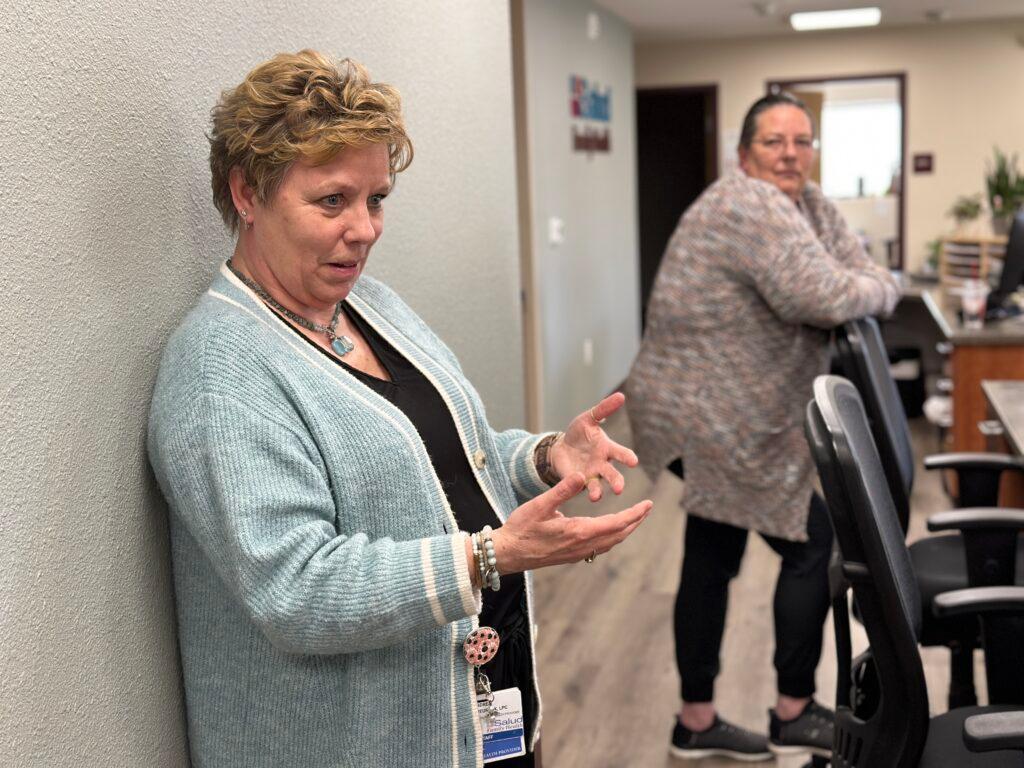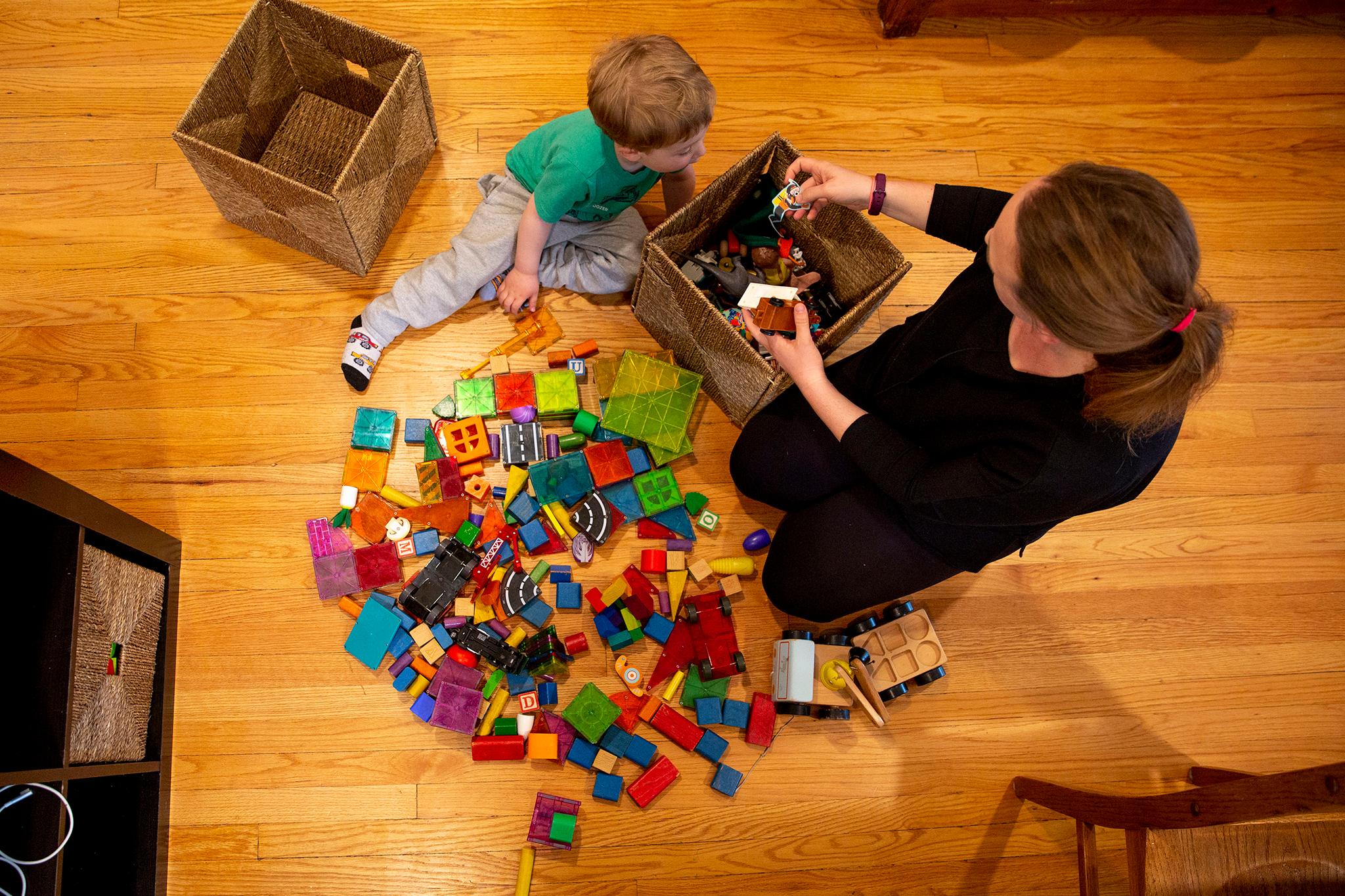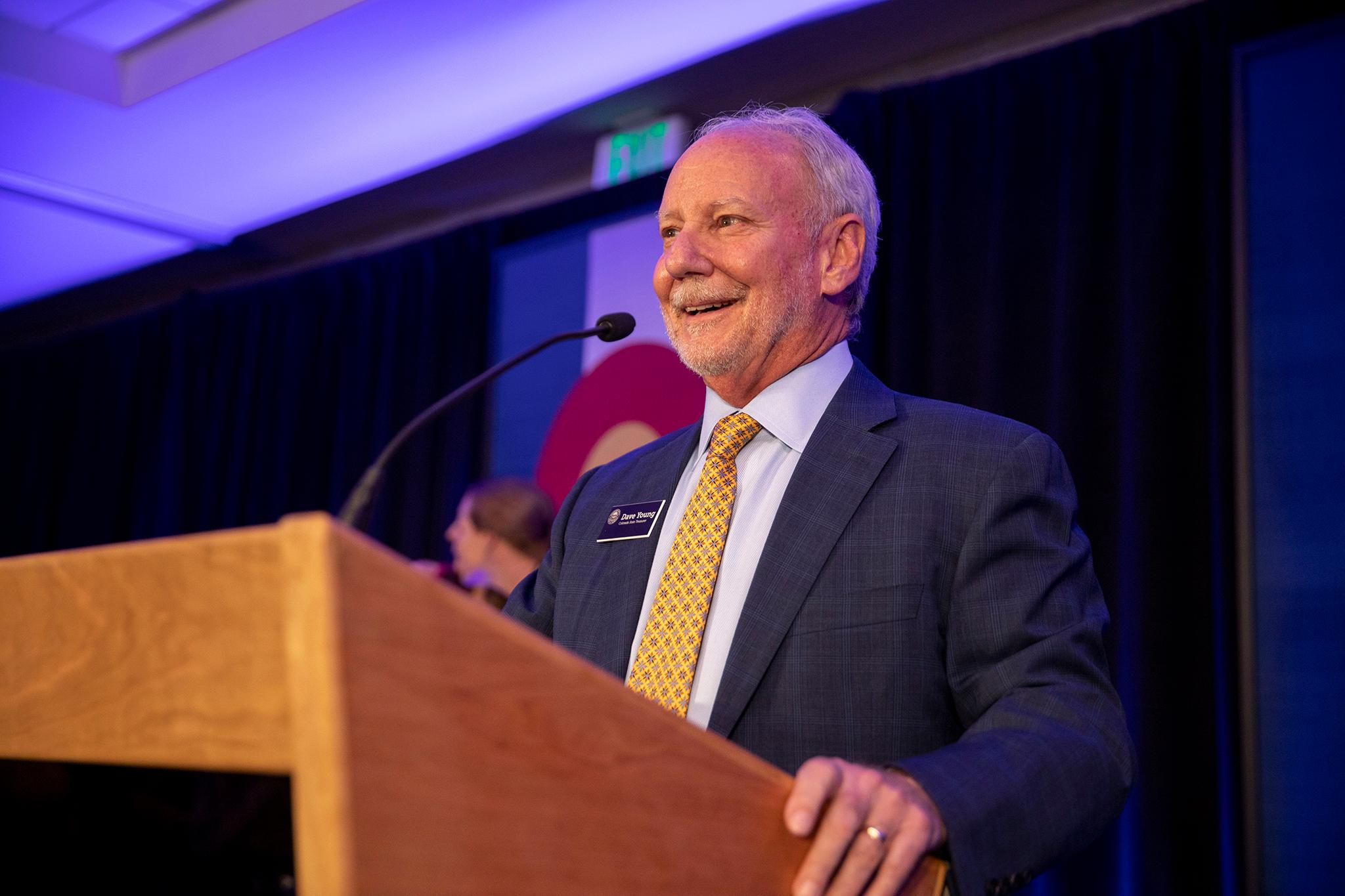
The last thing on Ismael Aldana’s mind was algebra.
His mom had just died and he was homeless on Chicago’s streets. It would have been easy not to go back to school.
“My English teacher taught me that everything was going to be OK,” he said. “Therefore, it was an avenue to learn.”
Decades later, Aldana’s job as a prevention specialist is finding ways to get chronically absent kids to school in the Mapleton school district, northeast of Denver in Adams County. It’s a challenge that school officials across the state are facing. Colorado has the fifth highest rate in the U.S. of chronically absent students in the 2022-23 school year – 31 percent compared to 25 percent nationally, according to data collected by The Associated Press and Stanford University economist Thomas Dee.
High absenteeism is a major red flag, a sign that students are falling behind in school. Chronically absent students are at higher risk of illiteracy and eventually dropping out. They also miss the meals, counseling and socialization provided at school.
A message from many school officials is they can’t battle the crisis alone. They’d like it to be a communitywide effort.
“Making sure that this is a priority not just for the school districts, but also for the cities, for the religious communities, the nonprofits, the business owners, our big companies… how can we make sure that this message is not just delivered by the school districts?” said Cori Canty, attendance manager with Denver Public Schools, which is launching a special cohort of schools focused on attendance this year.
Chronic absenteeism rates nearly doubled after the pandemic. Before the pandemic, about 15 percent of students nationally missed that much school but in Colorado, it was 22 percent. The state improved significantly – 5 percentage points – from the 2021-22 school year but researchers say that’s likely because its rate was so high to begin with.
Chronically absent means missing more than 10 percent of the school year for any reason.
“It only takes two days a month for a child to be chronically absent, and we want parents and families to prioritize getting their children to school on time every day,” said Susana Córdova, Commissioner of Education. “It helps to have a morning routine with extra time built in for traffic or over-sleeping. Every school day counts, and academic success starts with being there.”
Rates for last school year in Colorado will be released next week and are expected to show continued improvement, according to state officials.
Why are students absent?
The reasons can vary: mental health struggles, minor illnesses, avoiding a bully, working to help support family, lack of clean clothes, finding school boring or simply failing to see the point of regular attendance.
“We have to retrain ourselves on what is normal and what the expectations are,” said Aldana during a conference of school attendance officials in Fort Morgan last spring. About 20 school districts met several times last school year to learn from each other about what approaches work.
There’s still a belief among some parents and students that school is optional. Researchers say there’s some evidence to suggest remote pandemic learning played a role in that.
New research shows a strong link between chronic absenteeism and poor mental health.
Almost a quarter of chronically absent kids had high levels of emotional or behavioral problems, compared with just seven percent of kids with good attendance, according to a parent questionnaire in research from the University of Southern California.
Pre-teen boys showed high levels of hyperactivity or behavioral problems, while teenage girls struggled more with anxiety and depression.
“Teen girls’ emotional symptoms are explaining a large portion of their absenteeism behavior,” said Morgan Polikoff, a USC professor of education and one of the lead researchers.
Colorado’s high chronic absenteeism rate could partly be explained by higher-than-average mental health challenges.
High school students are reporting rising levels of persistent sadness and hopelessness in both state and national surveys. In the CDC’s Youth Risk Behavior Surveillance System, Colorado had the seventh highest increase in the nation among the 41 states that participated.

Aldana sees lots of social anxiety among students about interacting in person, made worse by social media.
“You see anxiety just trying to communicate ... .it can go from anything like asking for help, resolving disagreement, asking for a friendship.”
Sometimes kids think it’s easier to stay home. Parents sometimes admit to school officials, they’re at a loss in helping their children’s mental health.
“We get this all the time from parents…I don’t know what to do, I don’t know how to do this,’” said one school official at the Fort Morgan conference. She’d like to see more training for parents on mental health.
School officials say they’re seeing more cautious, anxious behavior from parents, who keep children home if the child says they’re anxious or has a slight cold.
Elizabeth Nemeth, an attendance advocate in Boulder Valley School District, will try to coax anxious parents into encouraging a child with a mild headache to come to school.
“It’s OK, just have them drink some water,” she’ll tell parents. “Once they get going, they’re going to feel better.” The parents often keep the child home. But staying home can become a vicious cycle, said Hedy Chang, of Attendance Works, which works with schools on absenteeism.
“If you continue to stay home from school, you feel more disengaged,” she said. “You get farther behind.”
Everyone at the Fort Morgan conference had one message for families.
“How can we help? Let us help your child. If your child stays at home they won’t have access to the mental health and social emotional supports that we have available at our school,” said DPS’ Canty.
What can be done? Recess for high schoolers?
Schools across the country are getting creative. One Massachusetts high school principal let students play organized sports – yes, recess — during lunch if they attended all their classes. The school saw one of the steepest declines in chronic absenteeism among the state’s high schools.
In Oakland, a grant-funded program paid students $50 a week for perfect attendance and meetings with mentors. It showed improved attendance because many absent students were helping to support their families.
Students who identify with their educators are more likely to attend school. One study found California students felt it was important to see someone who looked like them first thing in the day. Students report a teacher’s negative perceptions of absent students or comments like “guess who decided to come today?” makes them not want to go to class.

At the Fort Morgan conference, school officials consider how to improve upon solutions. Some might be administrative. Districts already send out instructions and flyers to schools, but are unsure if schools are using them. They say many parents won’t pick up a phone call if they know it’s from the school, especially a robocall, which a lot of big schools use.
“Especially when you have 2,000 kids in a high school you can’t expect to call even 100 kids, that would be their day,” said one school official. The group discusses how they can implement efficient systems for text communication.
Stanford’s Dee recommends school districts do a rapid, root-cause assessment to understand the barriers unique to their schools and implement proven approaches. Research shows home visits are very effective, as well as these evidence-based strategies:
- Engaging families about attendance through text messages and postcards can nurture awareness and motivation for parents to get their kids in school
- Telling parents their child is missing but also comparing them to their peers can be helpful.
- Using warm and inclusive language that stresses shared purpose more effective than legalistic or threatening language
“When they come back it’s not a ‘here’s what you missed while you were gone and now we’re going to have to get you caught up,’ ’’ said Lindsay Gentle, a middle school principal in the Greeley-Evans school district. “It’s, ‘I’m so glad you’re back’ and letting them know that you’re glad that they’re there.”
The district saw a boost in attendance last school year after it began a simple idea: conducting “empathy interviews” with chronically absent students, asking them what makes them want to come to school and what keeps them away.
The conference groups brainstorm a wish list for other barriers. Better before- and after-school care. Getting more students involved in athletics. But to do that means more help with transportation, a huge barrier. They wonder if school auto body shops can help repair broken-down cars of families who can’t afford to fix them. Homeless students, low-income students, and Colorado’s migrant students in particular, are struggling with getting to school.
Easy access to mental and physical health support has improved attendance at Fort Morgan High school. The Salud Family Health Clinic is right next door to the high school, where clinicians have helped rising numbers of students with eating disorders and social media challenges.

Officials say community partnerships are critical to helping schools eliminate barriers to kids getting to school – there are just aren’t enough. One group wants a list of all the churches in the district who also might be able to help.
More teenagers working to support families
School officials said some older teens began working during the pandemic to support families and never stopped.
“We have kids working dairies all night long and then they come to school here,” said Rena Frasco, assistant superintendent of Morgan County School District RE-3. “They have to work for their families….just the pure exhaustion.”
For those students, juniors and seniors can get credit for some types of work so they don’t have to choose between supporting their families or continuing school. Boulder Valley School District has similar flexibility for students in alternative high schools who have regular shift work and attend half days.
It’s these kinds of adaptations that increase the chances that some students will keep coming to school.
Is what students are learning relevant to their lives?
Stanford’s Dee said it’s problematic that the vast majority of high schools are based on a model of comprehensive college preparation that doesn’t relate to most kids’ futures. He said about 80 percent of kids will graduate high school, just half those will go on to college and just a fraction will graduate with a bachelor’s degree within four years.
“So, we've organized most high schools to serve a large minority of students in some sense,” he said.
Dee and other researchers see “enormous promise” in high-quality, rigorous career and technical education models for improving attendance and reducing dropout rates.
But officials want to get out the message that students are in schools for many more reasons than academics, said the Mapleton districts’ Aldana, who lost his mother and was homeless as a teenager.
“The public education experience is golden …we don't only teach our kids academics, we teach our kids how to resolve problems, how to ask for help, how to basically function in a society.”
The Associated Press contributed to this report.









